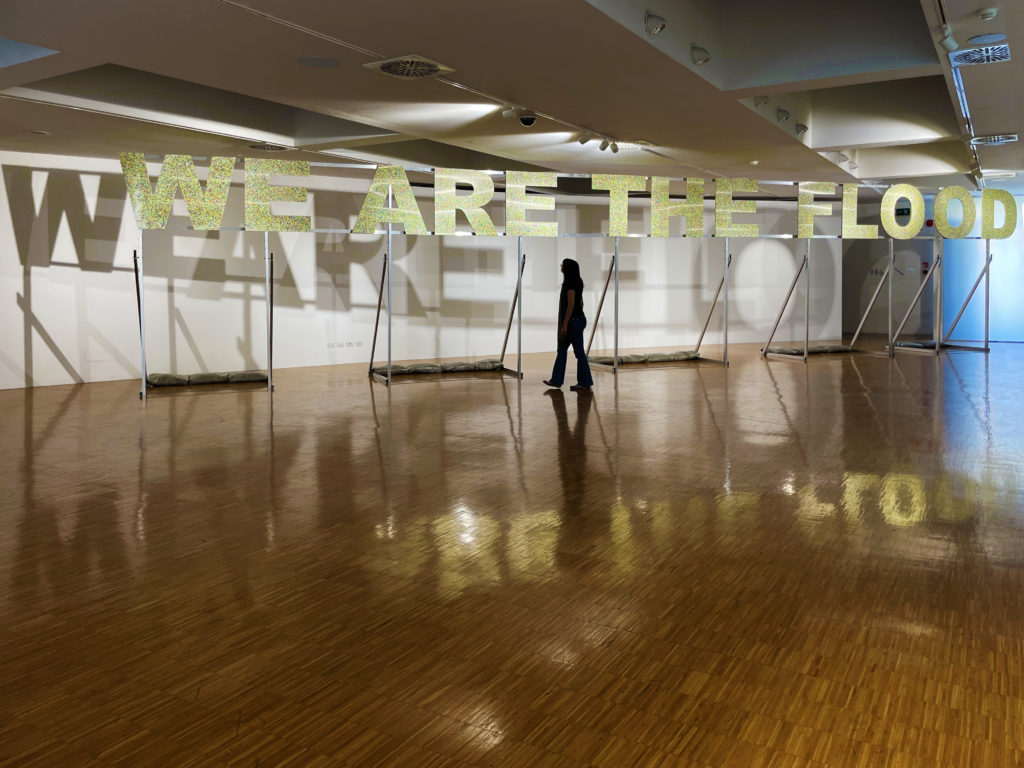Share the post "Telling the climate crisis through art. Interview with artist Stefano Cagol"
After studying at the Brera Academy and then at the Ryerson University in Toronto, the Italian artist Stefano Cagol (Trento, 1969) began his career in the ’90s, focusing all his production on supporting some themes that are more relevant today than ever, such as the energy, climate change and therefore the relationship between man and nature.
An artist and also an activist, Cagol, through photography, installations, and videos, but above all through artistic performances, helps make the world reflect on current emergencies by highlighting the political implications and effects of globalization.
Winner of several awards such as the Terna for Contemporary Art (Megawatt category), among his most important projects, is “The Time of the Flood. Beyond the Myth through Climate Change” which was presented in Italy in Rome and Venice, but also in Berlin, Vienna, and Tel Aviv. A multifaceted and conceptual artist who, in addition to performances, words are two very important aspects that complete the meaning of each of his works. And so, exclusively for MuseumWeek Magazine, in this long interview with Stefano Cagol, we asked what the term relationship means.
“Concepts, and therefore words, are central in my works. Even with their sound and their graphic appearance. I often start with the title, which becomes a summary and, sometimes, works itself. This is the case of neon writings such as ‘Flu Power Flu’ and ‘Ice Melting Ice’, a sort of short poems, but it is also the case of banners, such as the one presented at the 14th Curitiba Biennial in Brazil: ‘Non-Somos Aquecimento Global’, we are global warming, unexpectedly unleashed in front of visitors to the MON the Oscar Niemeyer Museum, while the Amazon rainforest was on fire. Many years ago during a very special masterclass near Villa Manin with just two students, the Californian artist Maria Nordman taught me the concept of time-specificity, of a unique connection with the moment”.
Then he adds: “This is the relationship: synchronicity, which makes us understand that we are not the center, but part of a balance between elements, as Niccolò Cusano, long before Copernicus, had already intuited. I particularly like the term synchronicity, because some linguists connect the term chronos not only with the idea of time but, more archaically, with the Sanskrit kar, the common root of creating and caring. Synchronicity is doing together, and caring together. Synchronicity is a key to our species and connection to the whole”.
The expression “We Are the Flood”, refers to the project “We Are the Flood. Liquid platform on climate crisis, anthropocene interactions and ecological transition”?
As almost always happens in my working method, the title and concept arise from and are a consequent evolution of the previous project, in this case from “The Time of the Flood”. The latter, a multi-site project with the support of the international promotion program of Italian contemporary art of the Ministry of Culture (called the Italian Council), started, with perfect synchronicity, a few days before the pandemic, describing the flood as a great upheaval.
Thus, in the text that closes the book to seal the project I declare “We are global warming, we are the pandemic, we are the flood”. We are used to always blaming someone else: industrialists, politicians, other nations. Instead, the flood represents our being, now 8 billion, fantastic but shocking, racing towards the abyss.

This is a project you created and curated for MUSE – Trento Science Museum. Can you tell us how it was conceived and what is its goal?
The project was conceived from a visceral and imperative urgency that made me compare for some years with the director of MUSE Michele Lanzinger regarding the proposal of a contemporary art that can create a decoding of the ongoing environmental and climate crises.
Science is not enough, numbers are not enough to make us understand the complex moment we are experiencing and to make us imagine desirable futures. Scientists and artists together, who in our imagination are poles apart, in this case, move in the same direction, in a continuous comparison.
Continue on MuseumWeek Magazine.
